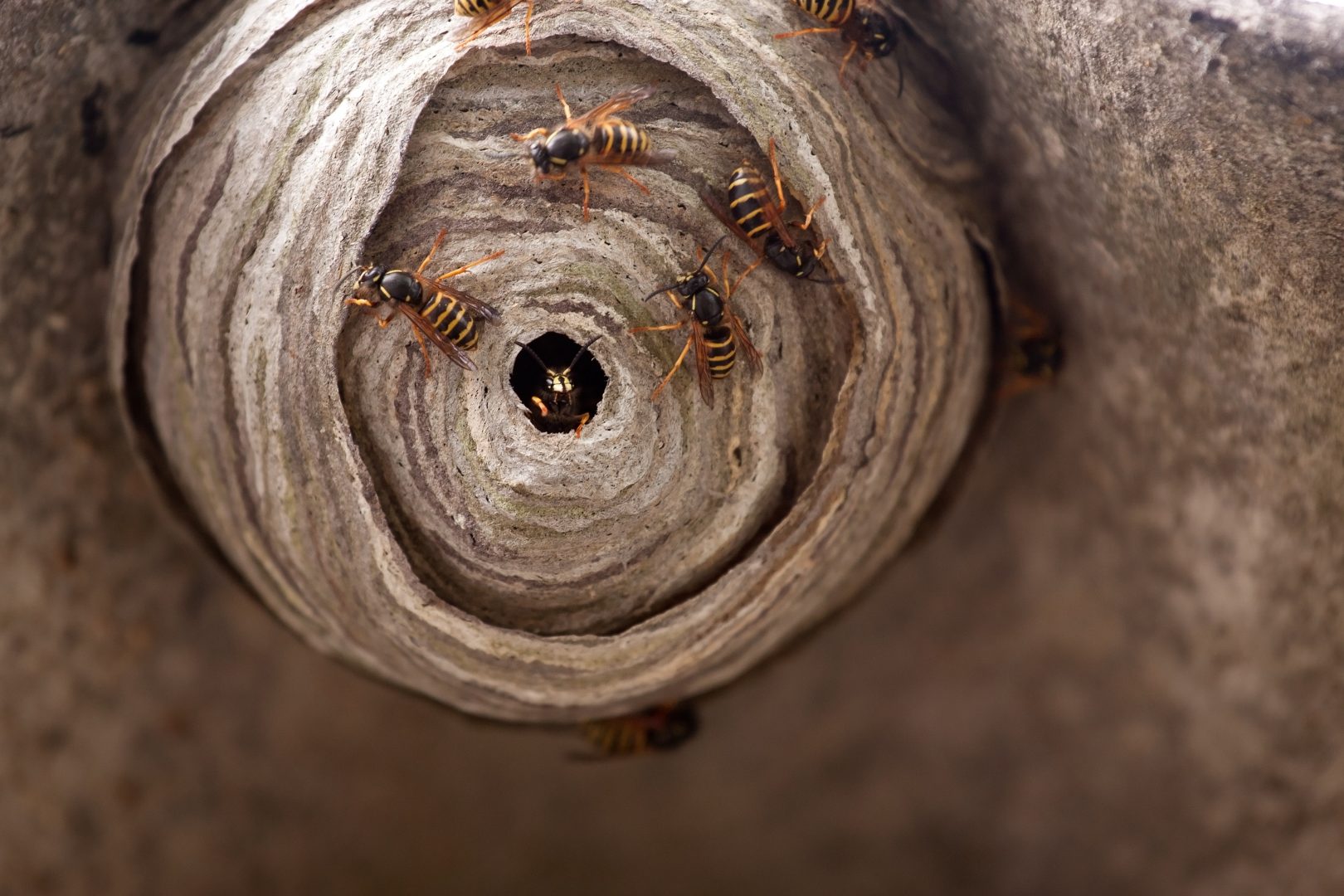As a predatory flying insect which are similar to bees, wasps are a benefit to the environment. Some wasp species contribute to natural pollination of plant life and all species can be a great source of natural pest control in your garden, on farms, and for crops. There are two most common types of wasps in Texas; the social wasps and the solitary wasps.
Social Wasps– The social wasp species includes yellow jackets, hornets, and paper wasps.
- Yellow Jackets, which are often mistaken for honeybees, are smaller, quicker, and a brighter yellow color compared to the honeybees. They are often identified by their side to side flight pattern prior to landing. Yellow Jackets are sometimes called meat bees, sweet bees, or ground bees because they are scavengers that eat meats and sweets. They do not build nests like bees; they are typically found nesting in holes in the ground and they will defend their home very aggressively and can sting many times without losing their stinger or dying. Like most wasps, yellow jackets peak during August and September with colony sizes between 4,000 to 5,000 workers. Sometimes yellow jackets nest in wall voids and attics, and can end up indoors in large numbers. If you see a yellow jacket nest inside or outside your home, do not remove it yourself; call your Dallas pest control company so a professional can remove it safely.
- Hornets, which are not too common in the southern US region, look similar to yellow jackets because of their color, but hornets are nearly double in size. Unlike most wasps, hornets are less aggressive, but can sting multiple times like other wasp species. They build nests indoors in attics, walls, and sides of walls, and outdoors in bushes, tree branches, and hallows. If you see a hornet nest, do not touch it and have a professional do it for you safely. Hornets peak in late summer and early fall, and by late fall they abandon their nests and the queens typically return to the same area during the winter.
- Paper wasps, which are most popular in the west and south regions of the United States as well as Mexico, are typically long with yellowish brown or black stripes. Paper wasp nests contain only 4 to 30 wasps and are open and made of a grayish paper-like material that has a honeycomb shape, which are typically found hanging under eaves and less often in attics or trees. They can also sting multiple times, and when aggravated they attack with a very painful sting.
Solitary Wasps– The solitary wasp species, which is also referred to as mud wasps, includes mud daubers, potter wasps, and pollen wasps.
- Mud Daubers, which are common in the south and west, are up to one inch in length and build small nests with 3 to 20 wasps per nest. They are skinny with needle like waists known as thread waist wasps. Mud Daubers nests are typically small and rarely thick and are not that protective of their nests, which can be found under eaves, porches, in attics, and on walls. They prey mainly on spiders and typically prefer black widow spiders, which makes them a great pest control wasp.
- Potter Wasps, which are also known as mason wasps, build pot or jug shaped nests. There are many types of potter wasps, but they are similar in color to bees or hornets. They are common from the south east to the west.
- Pollen Wasps, which can be mistaken for yellow jackets due to their similarity in size and build nests in the ground, have large antennas. They build their nests of mud and feed their young on nectar and pollen. Pollen wasps are common in the south and west regions.
Due to the many species of wasps that are popular to the southern region of the country, bee & wasp control is important in the Dallas Fort Worth area. In September wasp colonies peak with large numbers of workers, so be on the lookout for their nests. If you have any wasp nests in or around your home, do not attempt to remove it yourself as it could be very dangerous. Contact Buzz Kill Pest Control, your DFW pest control company, and we will safely remove the nest so you and your family will not be harmed.

